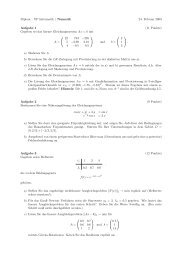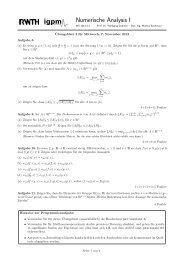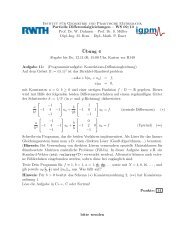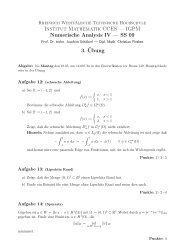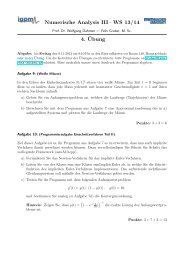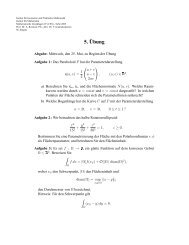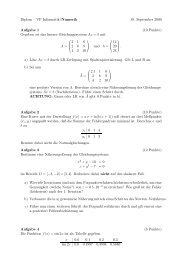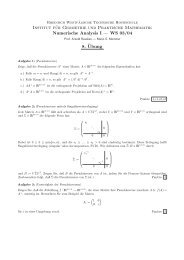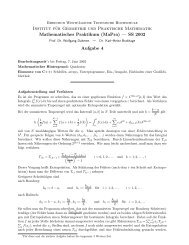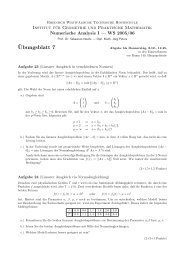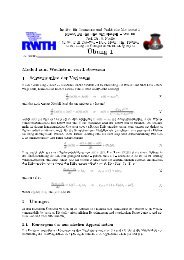Variable-step preconditioned conjugate gradient method for partial ...
Variable-step preconditioned conjugate gradient method for partial ...
Variable-step preconditioned conjugate gradient method for partial ...
Create successful ePaper yourself
Turn your PDF publications into a flip-book with our unique Google optimized e-Paper software.
Appendix B<br />
Without loss of generallyty, we can assume that a11 = 1 and a22 = ɛ ≤ a11. As it is readily seen<br />
from (19) the first and second eigenvalues are<br />
λ h 1 = λ h 1,1 = 4<br />
h2 �<br />
sin 2<br />
� �<br />
πh<br />
+ ɛ sin<br />
2<br />
2<br />
� ��<br />
πh<br />
,<br />
2<br />
λ h 2 = λ h 1,2 = 4<br />
h2 �<br />
sin 2<br />
� �<br />
πh<br />
+ ɛ sin<br />
2<br />
2<br />
�<br />
πh<br />
2 2<br />
��<br />
,<br />
and hence, we obtain<br />
q(εin, λ h 1, λ h 2) = εin + (1 − εin) λh 1<br />
λ h 2<br />
On the other side <strong>for</strong> a22 = δ < ɛ we have<br />
q(εin, ˆ λ h 1, ˆ λ h 2) = εin + (1 − εin) ˆ λ h 1<br />
ˆλ h 2<br />
=<br />
=<br />
1 + ɛ<br />
1 + 4ɛ cos 2 αh<br />
1 + δ<br />
1 + 4δ cos 2 αh<br />
+ (4 cos2 αh − 1)εinɛ<br />
1 + 4ɛ cos2 .<br />
αh<br />
+ (4 cos2 αh − 1)εinδ<br />
1 + 4δ cos2 .<br />
αh<br />
Since αh is close to zero, then in what follow we can use cos 2 αh ≈ 1. Thus, we obtain<br />
q(εin, λ h 1, λ h 2) − q(εin, ˆ λ h 1, ˆ λ h 2) =<br />
1 + ɛ 1 + δ<br />
·<br />
1 + 4ɛ 1 + 4δ · 3 · (1 + εin) · (ɛ − δ).<br />
which tends to zero as ɛ when ɛ → 0 and δ → 0, and hence, the number of iterations does not<br />
considerably changed with respect to the anisotropy ratio.<br />
19



